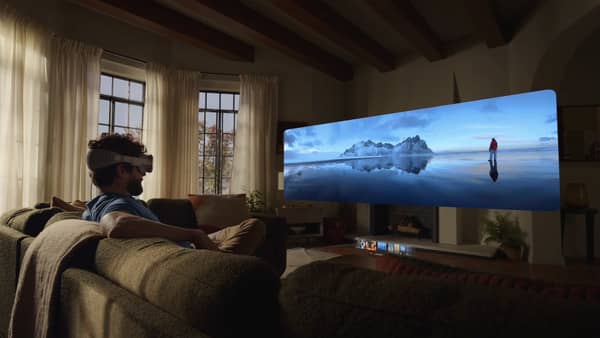
Low-Earth Orbit Internet Satellites Are the Future
October 9, 2024
The Different Types of AI Learning Explained
October 22, 2024On this Page…
- What Is Spatial Computing?
- How Does Spatial Computing Work?
- What Are Real World Examples of Spatial Computing?
- How Is Spatial Computing Related to AR and VR?
- Conclusion
Whether you realize it or not, spatial computing has become an integral part of our daily lives, revolutionizing the way we interact with technology. From GPS navigation systems to virtual home assistants and augmented reality apps, spatial computing has seamlessly merged the digital and physical worlds. However, despite its widespread use, many still struggle to grasp the full extent of spatial computing and its potential. Apple’s latest technological offering, the Vision Pro, can potentially push spatial computing into the mainstream and capture the attention of tech enthusiasts, industry experts, and everyday people alike.
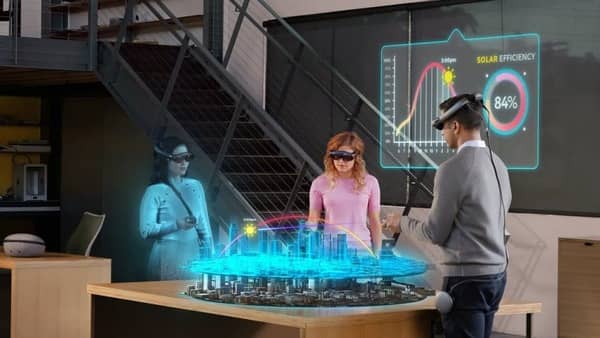
What Is Spatial Computing?
Spatial Computing is a multifaceted technology, combining tools and processes that manipulate 3D data. Introduced by Simon Greenwold in 2003, it highlights the machine’s capability to interact with real objects and spaces and integrate machines into our daily lives. Spatial computing is an “umbrella” concept, interweaving technologies like IoT, digital twins, ambient computing, AR, VR, artificial intelligence, and physical controls.
In the modern hybrid work environment, spatial computing is transforming human-computer interactions—improving the experience of working with computers and mobile devices. Combining user interfaces with our physical surroundings, it immerses us directly into the computing environment. From simple tasks like automated room lighting to complex operations like 3D camera-enabled factory processes, spatial computing has many potential applications.
Interactions typically occur through screens embedded in devices, VR headsets, or mixed reality devices superimposing data onto physical views. Companies like Microsoft Teams take advantage of these capabilities, using metaverse environments and extended reality headsets to foster a more unified remote team experience.
Spatial computing blends the digital and physical worlds by bridging virtual worlds and digital twins. It leverages our inherent spatial abilities to strengthen productivity and efficiency, use and share knowledge, and set a new standard for human-computer interaction.

How Does Spatial Computing Work?
Spatial computing is revolutionizing the way businesses operate by bridging the gap between the digital and physical worlds. It enables the alignment of computer programming with human cognition, automates the creation of digital twins, orchestrates multiple physical processes, and potentially paves the way for innovative interactions between humans, robots, and products in a physical space. These key features give businesses the ability to measure and improve the performance of their physical operations.
There are three basic parts of spatial computing. First, it sees 3D content in real-world environments, using tools like AR/VR headsets and AR apps. Next, it lets users interact with what they see in traditional ways through things like voice control, tracking your hand/body, touch feedback, and tracking your eye. Finally, it enhances the spatial experience by using advanced tools like lighting, picture-based modeling, artificial intelligence, 3D sound, and 3D design.
Spatial computing changes how we interact with the real world. It starts with making a 3D model of a place using pictures, lidar, and radar, and improving it with high-tech AI techniques such as NeRF. Then, the computer analyzes the data to spot objects, find problems, and keep track of everything. The last step is to react based on the analysis. An example would be a self-driving car stopping for a person, or a room changing to suit what a user like.
In essence, spatial computing harnesses technologies such as IoT, AI, and digital twins to elevate human engagement with 3D data, thereby transforming our interactive experiences.
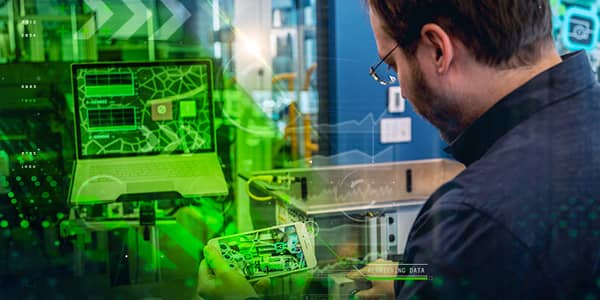
What Are Real World Examples of Spatial Computing?
Spatial computing’s transformative potential is already making waves, yet its full range of applications is yet to be discovered. But there are some great real-world examples of how spatial computing is improving various industries.
Spatial computing can assist in training the workforce. It can facilitate immersive and interactive training experiences. For example, extended reality applications such as the new Apple Vision Pro offer safe and remote virtual training platforms, revolutionizing traditional methods.
It can also assist in product design. Harnessing 3D visualization, spatial computing streamlines product development. It enables the creation of digital twins of products, opening avenues for limitless design experimentation.
Spatial computing can assist the healthcare industry. Systems like ProjectDR from the University of Alberta use spatial computing to project CT scans and MRI data onto a patient’s body, marking potential advancements in surgical practices.
It can improve customer service. Spatial computing enhances customer service by collecting customer information for personalized experiences. XR environments, using spatial computing devices can help facilitate seamless customer onboarding, training, and support.
With the rise of remote work, spatial computing enhances collaboration by providing a unified digital space for effective asset sharing and communication. This becomes even more immersive and interactive with the use of mixed-reality headsets like Apple Vision Pro and the HP Reverb G2.
Industries across the board, including automotive giants like Ford, are leveraging spatial technologies to drive innovation. As we look ahead, spatial technologies and devices are expected to contribute to smarter cities, communities, and environments, transforming productivity and creativity across all sectors.
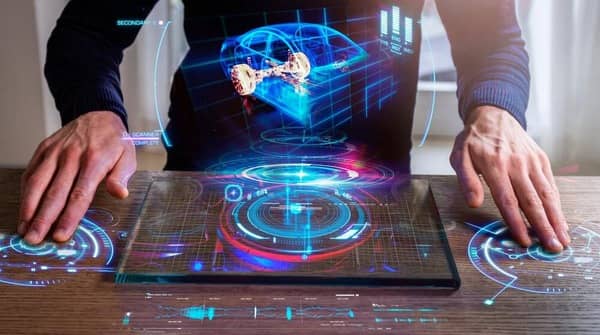
How Is Spatial Computing Related to AR and VR?
Spatial computing blends the capabilities of humans and machines into objects and environments, which takes human/computer interactions a step further than Virtual Reality and Augmented Reality. Unlike VR and AR, which create immersive environments and superimpose digital information, spatial computing uses physical space as a computer interface, understanding and interacting with the environment.
Tech giants like Microsoft and Amazon are investing heavily in this technology, which combines the capabilities of VR and AR with high-fidelity spatial mapping. Spatial computing’s potential is evident in concepts like the Digital Twin and the Metaverse.
In the Digital Twin concept, spatial computing goes beyond objects, creating digital representations of people and locations that can be manipulated and observed. This technology allows for real-time 3D visualization and experimentation.
With the Metaverse, the user interface for spatial computing revolutionizes interactions, moving from fixed computers and flat screens to eye-controlled interactions, body gestures, and voice controls. While the Metaverse offers a shared virtual space, spatial computing adds a new dimension. Instead of simply being in a digital world, users can interact more naturally, using gestures, voice, or eye movements. It’s like turning your whole environment into a computer interface, making digital interactions feel more real. With the support of tech giants such as Facebook, Google, and Apple, the potential of spatial computing continues to look promising.
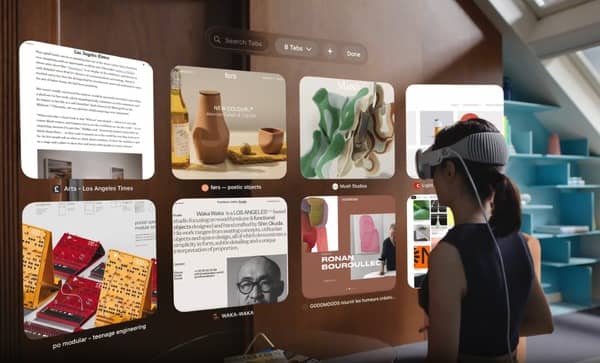
Conclusion
Spatial computing blends the digital and physical realms and revolutionizes how we interact with technology, impacting sectors from healthcare to the automotive industry. By enriching our environments with 3D data, promoting natural interaction, and dynamically responding to analyzed data, can potentially open up a new world of innovation and productivity. As spatial computing evolves, spearheaded by nearly all well-known tech giants, our interactive experiences will reach new heights, potentially reshaping our day-to-day lives.
